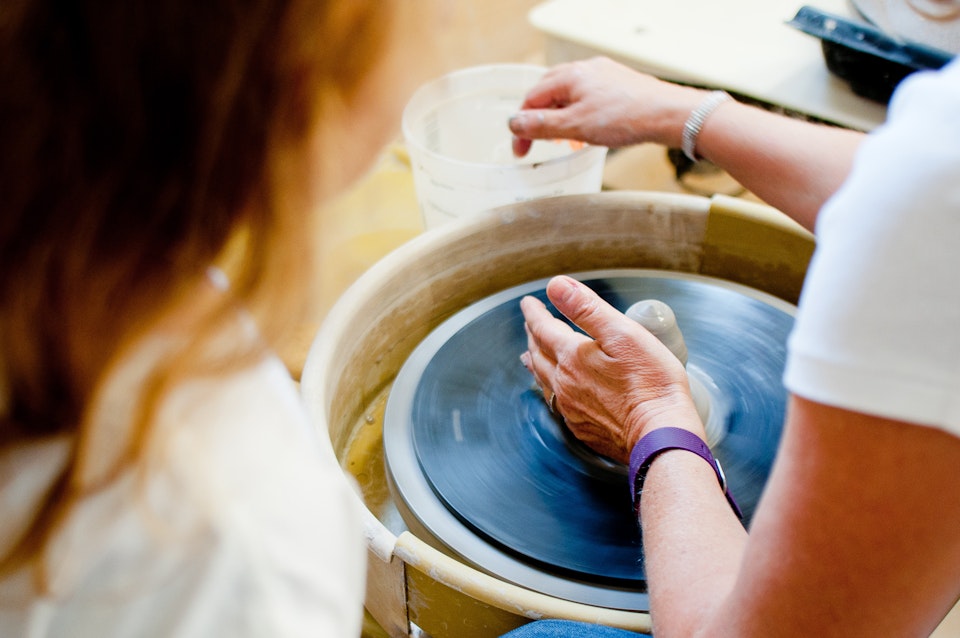June 28, 2018
The Lost Art of Apprenticeship
.jpg?auto=format&w=1440)
In the age of massive - and often unexpected - layoffs, how often do we wish we had practical skills that would provide us with income and give employ during hard times? Meanwhile, more and more people are willing to go back to a simpler lifestyle, consuming and spending less; not striving to earn millions, but enough to live a comfortable life without luxury. With this shift, an obvious new trend is emerging as many new boutique proprietors, local farmers, artisans and a slew of handy people offer their services and crafted objects to their communities.
Industrialization took people away from home-based production and herded them into skyscrapers to sit in front of computers and into factories to do monotonous tasks day in and day out. Globalization led to the development of the biggest pyramid scheme in the world with the creation of the “1% vs 99%” wealth disparity. Now, after 300 years of progress, it seems we want to go back to being part of a community, not a corporation. The proliferation of platforms that offer connections and support within one’s city, borough, or a neighborhood, such as Meetup, WeWork, GroupMuse and KitchenTableApp, attest to that.

Vacation with a ceramist. Courtesy of Maggie Markel.
So how do you learn the skills that centuries ago were passed from generation to generation in a craftsman’s family or through an apprenticeship with a master in a trade guild? You look for a master. It is difficult, but not impossible. There are many vocational schools and some government programs. However, the majority of these training opportunities focus on construction sector jobs, building maintenance, and infrastructure. What if you want to learn how to weave baskets, naturally dye textiles, or write in calligraphy? An obvious answer is “Google it” or “learn it on YouTube.” That’s easy. It is harder to find a willing teacher with a skill set that is unique and has a niche demand among consumers. Yet an intimate learning experience with someone who has practiced the craft for many years and perfected their artistry is invaluable.
One becomes a champion by practicing “Wax on Wax off” for days, like The Karate Kid movie protagonist Daniel under the watchful eye of his teacher, Mr. Miyagi. But the apprentice doesn’t only learn the moves; the most important knowledge is acquired between the exercises - the wisdom of the master who walked the path to becoming one. As Miyagi professes: “Man who catch fly with chopsticks accomplish anything.”

Vacation with a photographer. Courtesy of Shaun Mills.
Interacting with your teacher one-on-one builds a long lasting relationship. Mentorship often does not end after you learned the craft. Support and friendship are ongoing and could lead to collaborations or further introductions by your teacher. Furthermore, apprenticeship implies that the student lives within or in the close proximity to the studio or the workshop space. For many Westerners, that means living in a different country, immersed in a new culture, which we can experience firsthand with our mentors and their neighbors.
Centuries ago, apprenticeships were common, and not necessarily voluntary. For many destitute families who could not support their children, they were the only way to provide them with shelter, food and vocational education. Contractual requirements kept abuse ongoing, from child labour to overt slavery. That and the rapid movement towards industrialization and mass production have undermined this practice with time.
But times have changed, and so has our quality of living and our outlook on life. Now, we crave a simpler lifestyle, handmade craft, and personal mentorship. It makes sense to bring back the lost art of apprenticeship.

Courtesy of Jenny Begun.
Written by Jenny Begun.
Jenny lives between New York and Los Angeles and works with artists and art collectors. She loves to travel, talk to strangers and take the "road less traveled by." She writes about creative people with passion. Connect with her at www.artwithyab.com.
Begin your personal apprenticeship journey by finding your VAWAA artist
For more stories and new artist updates, subscribe here.